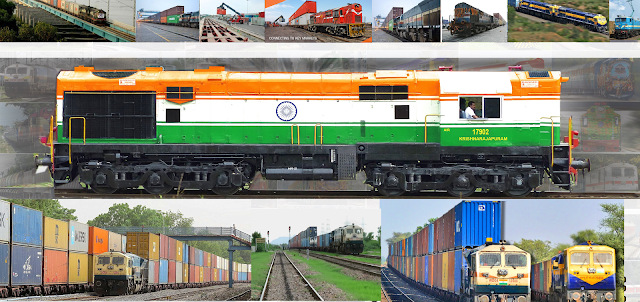India to start intercontinental container train
In January this year, China sent a container train from East China’s Yiwu all the way to London via Germany, covering a distance of 12,000 km and demonstrating that it can be cheaper, even faster mode of freight movement between the Asian giant and countries in Western Europe and all in between. In the recent past, countries across the world have realised the potential of carrying out trade through land routes which existed in ancient eras and much is being done to revive the same!
Taking a leaf from China’s run to Europe, India is going to start an inter-continental train. India will showcase its might in freight movement by running a trans-continental container train full of goods from Dhaka to Istanbul, covering a 6,000-km journey across five countries — Bangladesh, India, Pakistan, Iran and Turkey.
New lifeline in South Asian regional (rail) connectivity
Codenamed the ITI-DKD-Y corridor, the container train’s route is scheduled as Dhaka-Kolkata-Delhi-Islamabad-Tehran-Istanbul.
Codenamed the ITI-DKD-Y corridor, the container train’s route is scheduled as Dhaka-Kolkata-Delhi-Islamabad-Tehran-Istanbul.
Yangon will also be connected to Dhaka. The missing Tamu-Kalay link in Myanmar is still to be built.
This project will open up a new chapter in South Asian regional connectivity project. It can provide a new lifeline and much needed impetus for trade in South and South West Asia.
What has changed?
What has changed and also energized the project is that a long missing link of 150 km in Zahedan, in the Baluchestan province of Iran, has now been established, connecting the country to the Pakistan Railway network on the border. So the Trans-Asian Railway Southern Corridor, as it is formally named, under the aegis of the United Nations Economic and Social Commission for Asia and the Pacific (UNESCAP), is good to go all the way to Turkey after certain operational exchange of notes and coordination between the nations concerned, which India is anchoring this month.
“The demonstration run will happen very soon in 2017 and we will sort out all the issues with the countries concerned. It’s a great leap for South Asian regional connectivity in the rail sector. This will also demonstrate to the world that there can be a real, commercial trans-Asian container corridor of this magnitude in the rail sector,” informs Mohammad Jamshed, Railway Board Member (Traffic)
The long route will be cut short: Challenges addressed?
Currently, goods take a long, roundabout route from Ludhiana to Lahore which otherwise are just a few hours apart by rail. The March 15-16 meeting is aimed at discussing some common technical and operational parameters between the railway systems of the countries involved. So far, in communications between the railway systems, all countries have on paper endorsed the project and have said that the demonstration is technically feasible.
There are Political and logistical roadblocks, however. Pakistan, for instance, isn’t keen on containers from India crossing over into its railway network.
The railway networks of India and Bangladesh are connected by one weak bridge over the Padma river, according to the Indian Express, which means only lightweight cargo can be transported. So, in all likelihood, the first bit of cargo on this stretch of the Iron Silk Route will comprise cotton garments.
Past the Dhaka border, there is the inland container depot in India which will service the rail cargo train on its way to Kolkata. From Kolkata to Delhi and then to Attari and Lahore will be smooth sail, as per railway officials.


No comments:
Post a Comment
Note: only a member of this blog may post a comment.